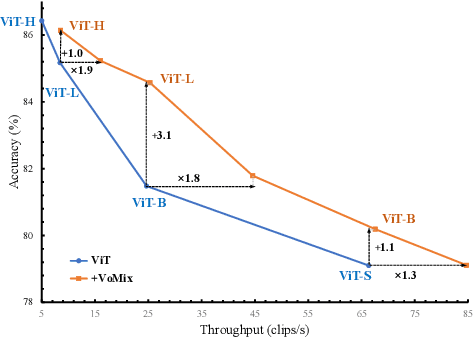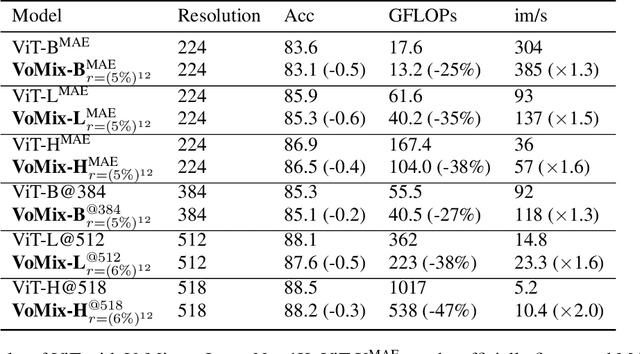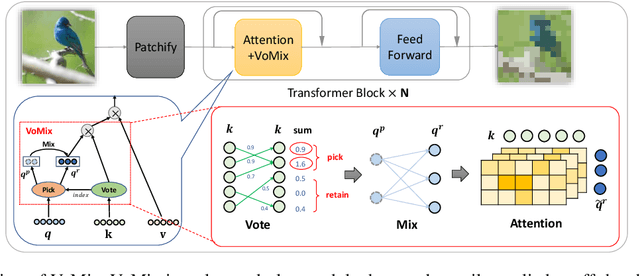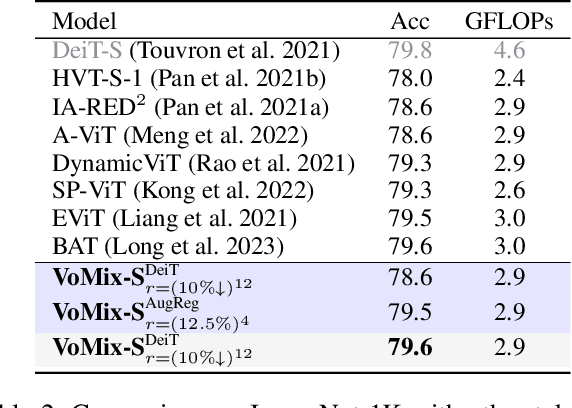Yong Cao
Scholar Inbox: Personalized Paper Recommendations for Scientists
Apr 11, 2025Abstract:Scholar Inbox is a new open-access platform designed to address the challenges researchers face in staying current with the rapidly expanding volume of scientific literature. We provide personalized recommendations, continuous updates from open-access archives (arXiv, bioRxiv, etc.), visual paper summaries, semantic search, and a range of tools to streamline research workflows and promote open research access. The platform's personalized recommendation system is trained on user ratings, ensuring that recommendations are tailored to individual researchers' interests. To further enhance the user experience, Scholar Inbox also offers a map of science that provides an overview of research across domains, enabling users to easily explore specific topics. We use this map to address the cold start problem common in recommender systems, as well as an active learning strategy that iteratively prompts users to rate a selection of papers, allowing the system to learn user preferences quickly. We evaluate the quality of our recommendation system on a novel dataset of 800k user ratings, which we make publicly available, as well as via an extensive user study. https://www.scholar-inbox.com/
Specializing Large Language Models to Simulate Survey Response Distributions for Global Populations
Feb 10, 2025Abstract:Large-scale surveys are essential tools for informing social science research and policy, but running surveys is costly and time-intensive. If we could accurately simulate group-level survey results, this would therefore be very valuable to social science research. Prior work has explored the use of large language models (LLMs) for simulating human behaviors, mostly through prompting. In this paper, we are the first to specialize LLMs for the task of simulating survey response distributions. As a testbed, we use country-level results from two global cultural surveys. We devise a fine-tuning method based on first-token probabilities to minimize divergence between predicted and actual response distributions for a given question. Then, we show that this method substantially outperforms other methods and zero-shot classifiers, even on unseen questions, countries, and a completely unseen survey. While even our best models struggle with the task, especially on unseen questions, our results demonstrate the benefits of specialization for simulation, which may accelerate progress towards sufficiently accurate simulation in the future.
Transforming Science with Large Language Models: A Survey on AI-assisted Scientific Discovery, Experimentation, Content Generation, and Evaluation
Feb 07, 2025Abstract:With the advent of large multimodal language models, science is now at a threshold of an AI-based technological transformation. Recently, a plethora of new AI models and tools has been proposed, promising to empower researchers and academics worldwide to conduct their research more effectively and efficiently. This includes all aspects of the research cycle, especially (1) searching for relevant literature; (2) generating research ideas and conducting experimentation; generating (3) text-based and (4) multimodal content (e.g., scientific figures and diagrams); and (5) AI-based automatic peer review. In this survey, we provide an in-depth overview over these exciting recent developments, which promise to fundamentally alter the scientific research process for good. Our survey covers the five aspects outlined above, indicating relevant datasets, methods and results (including evaluation) as well as limitations and scope for future research. Ethical concerns regarding shortcomings of these tools and potential for misuse (fake science, plagiarism, harms to research integrity) take a particularly prominent place in our discussion. We hope that our survey will not only become a reference guide for newcomers to the field but also a catalyst for new AI-based initiatives in the area of "AI4Science".
Vote&Mix: Plug-and-Play Token Reduction for Efficient Vision Transformer
Aug 30, 2024



Abstract:Despite the remarkable success of Vision Transformers (ViTs) in various visual tasks, they are often hindered by substantial computational cost. In this work, we introduce Vote\&Mix (\textbf{VoMix}), a plug-and-play and parameter-free token reduction method, which can be readily applied to off-the-shelf ViT models \textit{without any training}. VoMix tackles the computational redundancy of ViTs by identifying tokens with high homogeneity through a layer-wise token similarity voting mechanism. Subsequently, the selected tokens are mixed into the retained set, thereby preserving visual information. Experiments demonstrate VoMix significantly improves the speed-accuracy tradeoff of ViTs on both images and videos. Without any training, VoMix achieves a 2$\times$ increase in throughput of existing ViT-H on ImageNet-1K and a 2.4$\times$ increase in throughput of existing ViT-L on Kinetics-400 video dataset, with a mere 0.3\% drop in top-1 accuracy.
Vision-Language Models under Cultural and Inclusive Considerations
Jul 08, 2024



Abstract:Large vision-language models (VLMs) can assist visually impaired people by describing images from their daily lives. Current evaluation datasets may not reflect diverse cultural user backgrounds or the situational context of this use case. To address this problem, we create a survey to determine caption preferences and propose a culture-centric evaluation benchmark by filtering VizWiz, an existing dataset with images taken by people who are blind. We then evaluate several VLMs, investigating their reliability as visual assistants in a culturally diverse setting. While our results for state-of-the-art models are promising, we identify challenges such as hallucination and misalignment of automatic evaluation metrics with human judgment. We make our survey, data, code, and model outputs publicly available.
Rethinking the Effectiveness of Graph Classification Datasets in Benchmarks for Assessing GNNs
Jul 06, 2024Abstract:Graph classification benchmarks, vital for assessing and developing graph neural networks (GNNs), have recently been scrutinized, as simple methods like MLPs have demonstrated comparable performance. This leads to an important question: Do these benchmarks effectively distinguish the advancements of GNNs over other methodologies? If so, how do we quantitatively measure this effectiveness? In response, we first propose an empirical protocol based on a fair benchmarking framework to investigate the performance discrepancy between simple methods and GNNs. We further propose a novel metric to quantify the dataset effectiveness by considering both dataset complexity and model performance. To the best of our knowledge, our work is the first to thoroughly study and provide an explicit definition for dataset effectiveness in the graph learning area. Through testing across 16 real-world datasets, we found our metric to align with existing studies and intuitive assumptions. Finally, we explore the causes behind the low effectiveness of certain datasets by investigating the correlation between intrinsic graph properties and class labels, and we developed a novel technique supporting the correlation-controllable synthetic dataset generation. Our findings shed light on the current understanding of benchmark datasets, and our new platform could fuel the future evolution of graph classification benchmarks.
Does Mapo Tofu Contain Coffee? Probing LLMs for Food-related Cultural Knowledge
Apr 10, 2024



Abstract:Recent studies have highlighted the presence of cultural biases in Large Language Models (LLMs), yet often lack a robust methodology to dissect these phenomena comprehensively. Our work aims to bridge this gap by delving into the Food domain, a universally relevant yet culturally diverse aspect of human life. We introduce FmLAMA, a multilingual dataset centered on food-related cultural facts and variations in food practices. We analyze LLMs across various architectures and configurations, evaluating their performance in both monolingual and multilingual settings. By leveraging templates in six different languages, we investigate how LLMs interact with language-specific and cultural knowledge. Our findings reveal that (1) LLMs demonstrate a pronounced bias towards food knowledge prevalent in the United States; (2) Incorporating relevant cultural context significantly improves LLMs' ability to access cultural knowledge; (3) The efficacy of LLMs in capturing cultural nuances is highly dependent on the interplay between the probing language, the specific model architecture, and the cultural context in question. This research underscores the complexity of integrating cultural understanding into LLMs and emphasizes the importance of culturally diverse datasets to mitigate biases and enhance model performance across different cultural domains.
Exploring Visual Culture Awareness in GPT-4V: A Comprehensive Probing
Feb 15, 2024Abstract:Pretrained large Vision-Language models have drawn considerable interest in recent years due to their remarkable performance. Despite considerable efforts to assess these models from diverse perspectives, the extent of visual cultural awareness in the state-of-the-art GPT-4V model remains unexplored. To tackle this gap, we extensively probed GPT-4V using the MaRVL benchmark dataset, aiming to investigate its capabilities and limitations in visual understanding with a focus on cultural aspects. Specifically, we introduced three visual related tasks, i.e. caption classification, pairwise captioning, and culture tag selection, to systematically delve into fine-grained visual cultural evaluation. Experimental results indicate that GPT-4V excels at identifying cultural concepts but still exhibits weaker performance in low-resource languages, such as Tamil and Swahili. Notably, through human evaluation, GPT-4V proves to be more culturally relevant in image captioning tasks than the original MaRVL human annotations, suggesting a promising solution for future visual cultural benchmark construction.
Bridging Cultural Nuances in Dialogue Agents through Cultural Value Surveys
Feb 02, 2024



Abstract:The cultural landscape of interactions with dialogue agents is a compelling yet relatively unexplored territory. It's clear that various sociocultural aspects -- from communication styles and beliefs to shared metaphors and knowledge -- profoundly impact these interactions. To delve deeper into this dynamic, we introduce cuDialog, a first-of-its-kind benchmark for dialogue generation with a cultural lens. We also develop baseline models capable of extracting cultural attributes from dialogue exchanges, with the goal of enhancing the predictive accuracy and quality of dialogue agents. To effectively co-learn cultural understanding and multi-turn dialogue predictions, we propose to incorporate cultural dimensions with dialogue encoding features. Our experimental findings highlight that incorporating cultural value surveys boosts alignment with references and cultural markers, demonstrating its considerable influence on personalization and dialogue quality. To facilitate further exploration in this exciting domain, we publish our benchmark publicly accessible at https://github.com/yongcaoplus/cuDialog.
MLPs Compass: What is learned when MLPs are combined with PLMs?
Jan 03, 2024Abstract:While Transformer-based pre-trained language models and their variants exhibit strong semantic representation capabilities, the question of comprehending the information gain derived from the additional components of PLMs remains an open question in this field. Motivated by recent efforts that prove Multilayer-Perceptrons (MLPs) modules achieving robust structural capture capabilities, even outperforming Graph Neural Networks (GNNs), this paper aims to quantify whether simple MLPs can further enhance the already potent ability of PLMs to capture linguistic information. Specifically, we design a simple yet effective probing framework containing MLPs components based on BERT structure and conduct extensive experiments encompassing 10 probing tasks spanning three distinct linguistic levels. The experimental results demonstrate that MLPs can indeed enhance the comprehension of linguistic structure by PLMs. Our research provides interpretable and valuable insights into crafting variations of PLMs utilizing MLPs for tasks that emphasize diverse linguistic structures.
 Add to Chrome
Add to Chrome Add to Firefox
Add to Firefox Add to Edge
Add to Edge